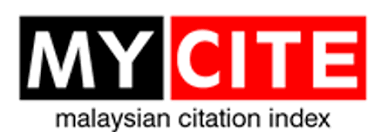PESTICIDE TOXICITY AND OXIDATIVE STRESS – A Review
DOI:
https://doi.org/10.51200/bjms.v11i2.466Keywords:
oxidative stress, pesticide, nrf2, antioxidant, pollutionAbstract
Oxidative stress is an imbalance in redox coupling in the body. Lack of antioxidants to scavenge the reactive oxygen species produces adverse effects on health. The causes for an imbalance in redox coupling are multi-factorial. Though, reactive oxygen species are beneficial in the body, excessive generation and lack of proper scavenging may pose a threat. Both internal and external factors may elevate the level. Environmental pollution is a major contributor. Man-made chemicals; pesticides, heavy metals, carbon combustion products are blamed. Chronic exposures lead to disease processes through oxidative stress. They mediate pro-inflammatory cytokines and produce free radicals. Pro-oxidant to antioxidant miss-match leads to the adverse effects. Nrf2 activates a number of genes that encode the antioxidants. Glutamate cysteine ligase is activated in response to Nrf2 and it is a key enzyme for GSH production. Nrf2 functionality protects the cells from environmental pollutants. Nrf2 mediates the antioxidant response due to chemical insults, translocated in the cell nucleus. Oxidative stress is known to induce a number disease states; genetic abnormalities, carcinogenesis, cardiovascular and respiratory diseases, neuro-degeneration - Parkinson’s and Alzheimer’s syndrome. Pesticides are the major pollutants; studies confirm oxidative stress and environmental pollution need to be addressed for public welfare.References
WHO. The WHO recommended classification of pesticides by hazard and guidelines to classification 2009. Geneva World Health Organization, International Programme on ChemicalSafety. 2009; http://www.who.int/ipcs/publications/pesticides_hazard_2009.pdf
Lushchak VI. Review. Free radicals, reactive oxygen species, oxidative stress and its classification. Chem Biol Interact. 2014; 224C:164-175.
Gomberg M. An instant of trivalent carbon: triphenylmethyl. J Am Chem Soc 1900;22: 757-771.
McCord J.M., Fridovich I. Superoxide dismutase. An enzymic function for erythrocuprein (hemocuprein). J. Biol. Chem. 1969; 244: 6049-6055.
Yamano T., Morita S. Hepatotoxicity of trichlorfon and dichlorvos in isolated rat hepatocytes. Toxicol. 1992; 76:69-77.
Bagachi D., Bhattacharya, Stohs S.J. In vitro and in vivo induction of heat shock (stress) protein (hsp) gene expression by selected pesticides. Toxicol. 1996; 112:57-68.
Leong C.T, D’Souza Urban J, Iqbal M, Mustapha ZA. Lipid peroxidation and decline in antioxidant status as one of the toxicity measures of diazinon in the testis.Reodx Rep. 2013; 18: 155-64.
Han E.S., Muller F.L. Perez V.I., Qi W., Liang H., Xi L., Fu C., Doyle E., Hickey M., Cornell J., Epstein C.J., Roberts L.J., Van Remmen H., Richardson A. The in vivo gene expression signature of oxidative stress. Physiol Genomics. 2008; 34: 112-26.
In-Chul Lee, Je-Won Ko., Sang Min Lee., Sung H.K., In-Sik S., Og Sung M., Won K. Y., Hyoung C.M., Jong C. K. Time-course and molecular mechanism of hepatotoxicity induced by 1,3 –dichloro-2 propanol in rats. Environ Toxicol Pharmacol. 2015; 40: 191-198.
Pesticide Action Network (PAN). List of lists: a catalogue of lists of pesticides identifying those associated with particularly harmful health or environmental impacts. 2005.
Othmer, K. Encyclopedia of Chemical Technology, John Wiley and Sons Inc. New York, USA.1996.
Frederick M Fishel, Professor, Agronomy Department and director, Pesticide information office: UF/IFAS Extension, Gainesville, FL 32611.
Osman, K.A. Lindane, chlorpyrifos and paraquat induced oxidative stress in female rats. Alex. J. Agric Res.1999; 44: 345-355.
Alva S, Damodar D, D’Souza A, D’Souza U.J. Endosulfan induced early pathological changes in vital organs of rat: A Biochemical approach. Ind. J. Pharmacol. 2012; 44:512-515.
Lascano, L, Munoz, N, Robert, G, Rodriguez , M, Melchiorre, M, Trippi, V, Quero G. Herbicides-Properties, synthesis and control of weeds. Cdn.intechopen.com/pdfs/25618.pdf.
Argentin, G, Divizia, M, Cicchetti, R. Oxidative stress, cytotoxicity and genotoxicity induced by methyl parathion in human gingival fibroblasts: Protective role of epigallocatechin -3-gallate. J. Toxicol Environ Health A. 2015; 78: 1227-40.
Narayana K, Prashanthi N, Nayanathara A, Kumar HH, Abhilash K Bairy KL. Effects of methyl parathion (O,O- dimethyl-o-4-nitrophenyl phosphorothioate) on rat sperm morphology and sperm count, but not fertility are associated with decreased ascorbic acid levels in the testis. Mutat Res. 2005; 588: 28-24.
Repine J E, Bast A, Lankhorst. Oxidative stress in chronic obstructive pulmonary disease. Oxidative stress study group. Am J Respir Crit Care Med. 1997; 156: 341-357.
Kasahara Y, Tuder RM, Cool CD, Lynch DA, Flores SC, Voelkel NF. Endothelial cell death and decreased expression of vascular endothelial growth factor and vascular endothelial growth factor receptor 2 in emphysema. Am J Respir Crit Care Med. 2001; 163:737-744.
Kau HC, Wu S B, Tsai C C, Liu C J L, Wei Y H. Cigarette smoke extracts-induced oxidative stress and fibrosis –related genes expression in orbital fibroblasts from patients with Graves’ Opthalmology. Oxidative Med & Cellular Longevity. 2016; 4676289. Doi: 10: 1155/2016/4676289.
Chan YL, Saad S, Pollock C, Oliver B, Al-Odat, Zaky AA, Jones N, Chen H. Impact of maternal cigarette smoke exposure on brain inflammation and oxidative stress in male mice offspring. Sci Rep. 2016; 12:6: 25881.
Nesi RT, de Souza PS, Dos Santos GP, Thirupathi A, Menegali BT, Silveira PC, da Silva L A, Valenca S S, Pinho R A. 2016; 11: 603-10.
Scheffler S, Dieken H, Krischenowski O, Forster C, Branscheid D, Aufderheide M. 2015; 12: 3915-25.
Nazimabashir, Manoharan V, Miltonprabu S. Cadmium induced cardiac oxidative stress in rats and its attenuation by GSP through the activation of Nrf2 signaling pathway. Chem Biol Interact. 2015; 242: 179-93.
Lan A P, Chen J, Chai Z F, Hu Y. The neurotoxicity of iron, copper and cobalt in Parkinson’s disease through ROS-mediated mechanisms. Biometals. 2016; DOI 10: 1007/s 10534-016-9942-4.
Bayele H K, Balesaria S, Srai S K. Phytoestrogen modulate hepcidin expression by Nrf2: Implications for dietary control of iron absorption. Free Radic Biol Med. 2015; 89: 1192-202.
Jiang X, An Z, Lu C, Chen Y, Du E, Qi S, Yang K, Zhang Z, Xu Y. The protective role of Nrf2-Gadd45b against antimony-induced oxidative stress and apoptosis in KEK293 cells. Toxicol Lett. 2016; 256:11-8.
De Felice A, Greco A, Calamandrei G, Minghetti L. Prenatal exposure to the organophosphate insecticide chlorpyrifos enhances brain oxidative stress and prostaglandin E2 synthesis in a mouse model of idiopathic autism. J neuroinflammation. 2016; 13: 149.
Barranger A, Heude-Berthelin C, Rouxel J, Adeline B, Benabdelmona A. Burgeot T, Akcha F. Prenatal exposure to the herbicide diuron results in oxidative DNA damage to germinal cells of the Pacific oyster Crassostrea gigas. Comp Biochem Physiol C Toxicol Pharmacol. 2016; 180: 23-30.
Gupta J, Datta Ch, Sarkar A, Senugupta D. Effect of malathion on antioxidant defense system in human fetus an in vitro study. Ind J Exp Biol. 1992; 30: 352-354.
Agarwal K, Singh D, Singla S K. Studies on the effect of oxidative stress induced by chlorpyripos on antioxidant hepatic enzyme in rat. World J Phar & Pharmaceutical Sci. 2014; 3: 523-533.
Poonam S, Singh R. Dichlorvos and lindane induced oxidative stress in rat brain: Protective effects of ginger. Pharmacognosy Res. 2012; 4: 27-32.
Oguzhan D, Zeynep B D. Responses of antioxidant enzymes and heat shock proteins in Drosophila to treatment with a pesticide mixture. Arch Biol Sci, Belgrade.2015; 67: 869-876.
Sema E, Dilek P, Fatma G U, Hatice B. Protective role of vitamins C and E in dichlorvos – induced oxidative stress in human erythrocytes in vitro. Biol Res. 2013; 46: 33-38.
Marcin et. al., Higher antioxidant and lower cadmium concentrations and lower incidence of pesticide residues in organically grown crops: a systematic literature review and meta-anlysis. Br J Nutr. 2014; 112: 794-811.
Cochranc C G. Cellular injury by oxidants. Am J Med. 1991; 92: 235-305.
Banerjee B D. Seth V, Ahmed R S. Pesticide-induced oxidative stress perspectives and trends. Rev Environ Health. 2001; 16: 1-40.
Goodyear-Bruch C, Pierce J D. Oxidative stress in critically ill patients. Am J Crit Care. 2002; 11: 543-51.
Matsui et al. Increased formation of oxidative DNA damage, 8-hydroxy-2’ –deoxyguanosine in human breast cancer tissue and its relationship to GSTP1 and COMT genotypes. Cancer Letters. 2000; 151: 87-95.
Hyberton et al., Oxidative stress in health and disease: the therapeutic potential of Nrf2 activation. Mol Aspects of Med. 2011; 32: 234-246.
Bonomini F, Tengattini S, Fabiano A, Bianchi R, Rezzani R. Atherosclerosis and oxidative stress. 2008; 23: 381-90.
Zamzila A N, Aminu I, Niza S, Razman M R, Hadi M A. Chronic organophosphate pesticide exposure and coronary artery disease : Finding a bridge. IIUM Research, Invention and Innovation exhibition (IRIIE). 2011.
Onyou Hwang. (2013). Role of oxidative stress in Parkinson’s disease. Exp Neurobiol. 2013; 22: 11-17.
Downloads
Published
How to Cite
Issue
Section
License
All articles are published under the Creative Commons Attribution-NonCommercial (CC BY-NC 4.0) license, enabling users to read, download, copy, distribute, and adapt the material for non-commercial purposes, provided proper credit is given to the original authors and the source. This model supports transparency, accessibility, and the global exchange of medical knowledge.








1.png)





